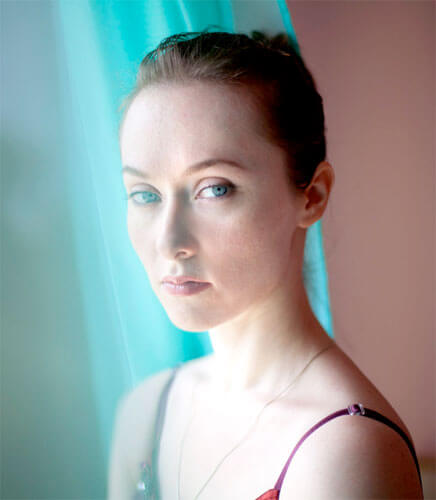Katerina Belkina was born in Samara, a city in the South-East of the European part of
Russia. She grew up in an artistic atmosphere; her mother is a visual artist and, in herplace
of birth, she got an education in the art of painting at the Art Academy. She continued her
education in 2000 at an Academy for Photography also in Samara and exhibitions of her
mysterious self-portraits ensued in Moscow and Paris. Katerina Belkina was nominated for
the prestigious Kandinsky Prize (comparable to the British Turner prize) in Moscow in 2007.
At the moment, Katerina Belkina is living and working in Moscow and Berlin.
AAP: Where did you study photography?
I started in a studio of photography and then I decided to study photography in an Art College. After several years I learned photography at the Photo Academy in Samara, Russia.
AAP:How did you become a photographer?
I think of myself as an artist in the broad sense of the word. For me photography is just a medium like a painting, drawing etc. However I like to use photography as a basis for my works. This form of art was always interesting for me. As well as drawing. I was influenced by my family in my childhood to like both mediums.
AAP: Do you remember your first shot? What was it?
When I was in fifth grade I took my school photo-group. Otherwise everything around me: school friends, street dogs, home yard.
AAP:What was your first paid assignment/job?
It was for an inexpensive portrait. The client was a girl who looked very similar to Marilyn Monroe. I found out that only when I looked at her in the viewfinder.
AAP: What or who inspires you?
Other people working in my field. When I see good results and when I see how they work.
AAP: Do you spend a lot of time editing your images? For what purpose?
Yes, a lot. At first I like the process of editing. In my case it is a combination of photo elements and then layer by layer drawing or correcting and making post-productions. I like when any art work include skills and labor. Every good idea should be perfectly executed.
AAP: How do you choose your subjects?
I always choose a topic that could be interesting for me at that moment. Then comes the process of thinking about. In the beginning ideas are always abstract. After a while it takes a shape: I choose a subject, composition, color combinations and details.
AAP: Can you explain the process that you use to set up a portrait?
When the idea takes shape in my mind, I draw a sketch, prepare all the necessary things for shooting and then start. Despite the fact that I know very exactly what I want for my future composition, I like to allow improvisation in the process. Because the result can be interesting and unexpectable. To take self-portraits I use a stative and make it by myself or I ask an assistant.
AAP: Your worst souvenir as a photographer?
Oh yes I remember! A meeting with a client who paid me and thought the world should rotate around him just because of that.
AAP: What advice would you give a young photographer?
Shoot a lot, take everything that could be interesting for you. Try new things, make discoveries. This is the most important thing. Don’t listen to anybody when they want to teach you something especially when it is in a critical way.
AAP: What mistake should a young photographer avoid?
Don’t try to be or to do like someone else. Your photography style will become unique over time. You need to be interested by what you are doing even if other photographers or artists can inspire you.
